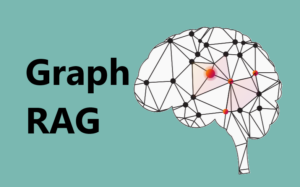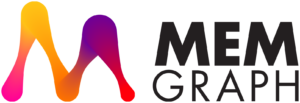
The most effective GenAI functions mix the freshest, most pertinent buyer knowledge with prime language fashions, however getting that knowledge into the mannequin’s context window isn’t straightforward. That’s the place the brand new GraphRAG functionality introduced right this moment by in-memory graph database Memgraph comes into play.
Memgraph develops an in-memory graph database that excels at real-time use circumstances which might be a mixture of transactional and analytical workloads, akin to fraud detection and provide chain planning. It was launched as an open supply providing in 2016 by Dominik Tomicevic and Marcko Budiselić, who discovered that conventional graph databases couldn’t deal with the calls for of this specific sort of utility.
Conventional graph databases, akin to Neo4j, are batch oriented and retailer knowledge on disk. This works properly whenever you need to ask a variety of graph questions on giant quantities of slow-moving knowledge, but it surely doesn’t work properly whenever you want fast solutions on quicker transferring however smaller knowledge units, Tomicevic says.
“The issue begins when you have a number of writes per second (a whole bunch of 1000’s or thousands and thousands per second),” the Memgraph CEO tells BigDATAwire. “Neo4j can’t deal with that form of writes per second, particularly being responsive on the identical time to the learn queries and analytics.”
Neo4j gives high-performance graph algorithms and analytics through its Graph Knowledge Science (GDS) library. Nonetheless, GDS requires works basically as a separate database, which doesn’t tackle real-time wants.
As an alternative of attempting to suit analytic use circumstances right into a batch graph database, Tomicevic and Budiselić determined to construct a graph database from scratch that caters to this specific sort of workload. Memgraph shops all knowledge in RAM, offering not solely quick knowledge ingest but in addition the potential to run analytics and knowledge science algorithms on the whole lot of the graph.
This method brings tradeoffs, after all. Storing knowledge in RAM is orders of magnitude dearer than storing it on disk. Clients won’t be able to construct huge graphs on Memgraph, which is constructed on a scale-up structure (a distributed structure would introduce an excessive amount of latency). The everyday Memgraph databases have a couple of a whole bunch of thousands and thousands of nodes and edges, whereas a number of the largest have single-digit billions of edges. Graphs in Neo4j will be a lot greater, measured within the trillions of nodes, with a theoretical restrict within the quadrillions.
However for sure sorts of high-value workloads, Memgraph gives the correct mix of real-time ingest and analytics capabilities that offering buyer worth. It makes use of Neo’s open supply Cypher question graph language, which suggests Memgraph is a drop-in substitute, Tomicevic factors out.
GraphRAG in Memgraph 3.0
With right this moment’s launch of Memgraph 3.0, the corporate is taking its real-time analytics funding into the world of generative AI. It’s launching a pair of recent options with Memgraph 3.0 that place the database to be extra helpful for rising GenAI workloads, akin to serving chatbots or AI brokers.
The primary new function in Memgraph 3.0 is the addition of vector search. By storing graph knowledge as vector embeddings, customers will have the ability to serve specific relationships (as outlined by the graph nodes and edges) into the context home windows of language fashions to get a greater end result as a part of a RAG pipeline, or GraphRAG.
Language mannequin context home windows are getting very giant. As an illustration, Google’s Gemini 2.0 mannequin, which was made obtainable to everybody final week, can now settle for 2 million tokens in its context window. That’s plenty of knowledge, equal to about 1.5 million phrases, however that, in and of itself, will not be sufficient to make sure accuracy.
“Even in the event you had that, that may most likely be an issue for simply choosing out what the best data is,” Tomicevic says. “We will leverage a number of the conventional graph algorithms with neighborhood detection to group the info into teams that make sense, after which you are able to do partial summarization on every group.”
Memgraph is offering primary vector capabilities with model 3.0. If clients want extra superior options, they’ll combine Memgraph with devoted vector databases, akin to Pinecone, Tomicevic says.
GraphRAG assist in Memgraph will even minimize down on the tendency for language fashions to hallucinate and supply greater high quality solutions general, he says.
“There’s plenty of issues with simply deploying LLMs and coaching and pre-training and high quality tuning and different issues,” the CEO says. “LLMs are horrible at accounting, for instance. They’re additionally horrible at hierarchical relationships and pondering. When you have a graph and also you perceive that there’s an issue that’s hierarchical, you’ll be able to ask them to make use of the graph to interrupt down the hierarchy, after which you’ll be able to create a greater general reply than simply conventional LLM would provide you with.”
For extra data on Memgraph’s assist for GraphRAG, see memgraph.com/docs/ai-ecosystem/graph-rag.
Pure Language Graphs
Memgraph 3.0 additionally brings enhancements to GraphChat, a pure language interface for Cypher. With this launch, Memgraph clients can ask a graph query in plain English, and GraphChat will convert it to Cypher for execution on Memgraph. This may have the influence of reducing the barrier to accessing refined graph knowledge science capabilities, Tomicevic says.
“Graphs are very highly effective. They’ll do plenty of issues,” he says. “[With GraphChat] they change into extra in attain of the individuals who don’t have a graph PhD, if you’ll. It may be the builders which might be growing these functions they usually could make them extra productive.”
Memgraph can be supporting fashions from DeepSeek, the Chinese language developer that burst onto the AI scene just some weeks in the past with a reasoning mannequin akin to these from OpenAI. The corporate has additionally launched efficiency and reliabity enhancements with model 3.0, in addition to updates to Python libraries and the Docker package deal.
Associated Objects:
The Way forward for GenAI: How GraphRAG Enhances LLM Accuracy and Powers Higher Choice-Making
O’Reilly and Cloudera Announce Inaugural Strata Knowledge Awards Finalists
Graph Databases All over the place by 2020, Says Neo4j Chief

